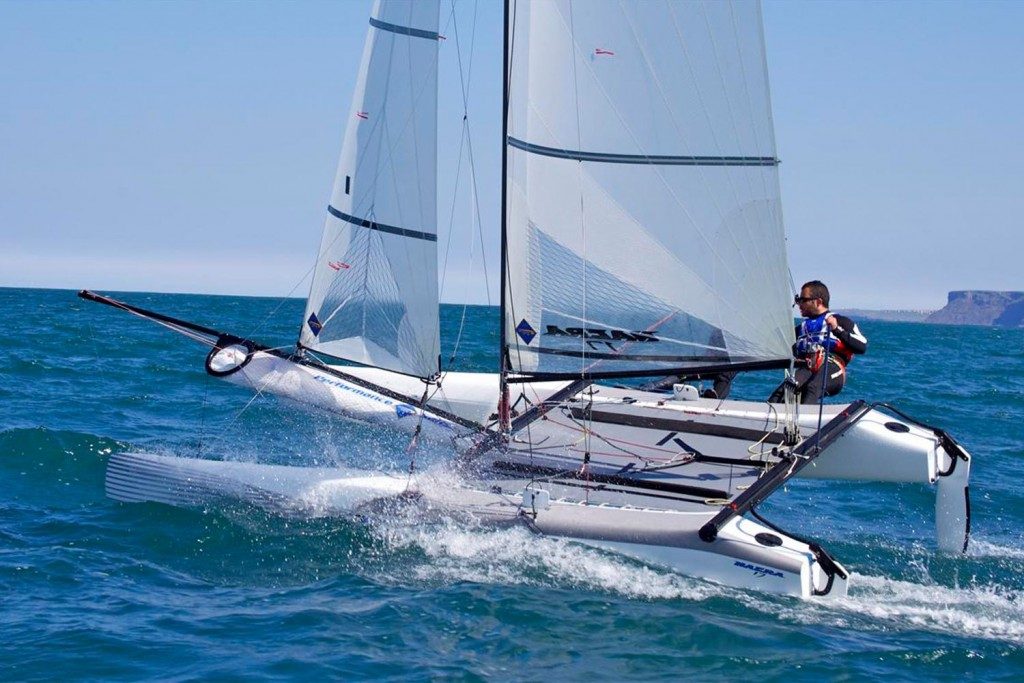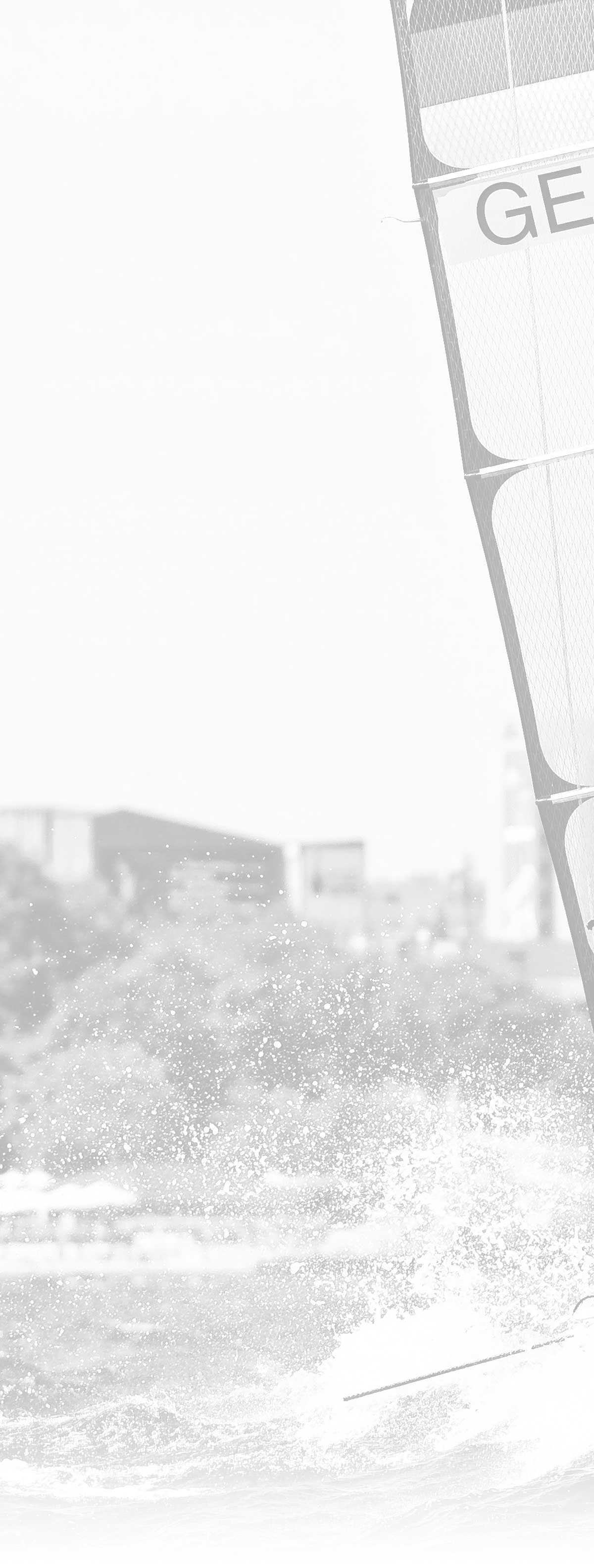Nacra 17
In May 2012, World Sailing selected the Nacra 17 as the equipment for the mixed multihull event at Rio 2016. It was the first time there has a mixed discipline on the Olympic sailing program.
After the Rio Olympics, the class and Nacra Sailing agree to evolve the boat to become a fully foiling catamaran. Between hull number 338 and 339, the transition occurred to a 4-point fully foiling multihull. Boats older than 338 had the option to retrofit themselves into the fully foiling configuration.
Nacra Sailing International is a Dutch company and based in Scheveningen (The Hague). Morrelli & Melvin designed the Nacra 17 fully in line with the specifications given by World Sailing for the Olympic multihull 2016. The curved dagger boards ad a distinct dimension to the catamaran sailing. In February 2013, the Nacra 17 was selected HISWA Boat of the Year.
The NACRA 17 is used as the exclusive Olympic Multihull equipment in the “mixed multihull class” running up to the Olympic Games. Every year there are several ISAF World Cups, World Championships and other continental championships where the elite sailors of the world in the catamaran are racing one another.

Why a Nacra 17?
The NACRA 17 was designed from scratch to meet the specific criteria set out by ISAF for the 2016 Olympic multihull. NACRA also produce a Formula 16 and a Formula 18 catamaran and we had initially considered entering these products, but with some changes in order to more closely match the ISAF requirements. Since ISAF’s specification did not require the design to conform to any existing class rule, we were considering adding performance-enhancing features like a carbon mast and curved dagger boards. The F16 class and F18 class rules do not allow either of these features.
After doing some further research into the ISAF requirements and what was possible within this design space, we determined that neither the F16 nor F18 platforms would be ideal within the set ISAF criteria and for Olympic Athlete’s.
Design Nacra 17
Since no existing design or class fits the ISAF specs, we decided to create an all-new design that is about 17 feet long, called the NACRA17. Compared to an F16 class catamaran, it is 250mm longer, 100mm wider, has a taller mast and more sail area, and curved dagger boards.
For the design the Nacra team again joined forces with world famous design office Morrelli & Melvin from Huntington Beach, California as we have been doing for many years. Morrelli & Melvin are known for their America’s Cup involvement and many other successful multihulls projects such as: PlayStation, Gun boats and many others.
The design chosen for the Olympics results into a full compliance with World Sailing criteria and no interference with any other successful multihull class today.
Wave piercing design – Wave piercing designs have a minimum draft resulting in a boat which has less drag and tends less to rock, creating a more constant high speed than conventional designs
Stiff platform – The Nacra 17 is the stiffest production platform available in their class, resulting in direct response in the boat and the energy of wind is maximum being transferred into forward motion
Light boat – The Nacra 17 being light for its length ensures superb handling on and off the wate, broader wind range during regatta’s, Resulting in a agile and therefore challenging boat to sail
Robust – Strongly build in epoxy/glass/carbon and therefore durable and long lasting
Modern rig – Powerfull carbon mast to ensure both safety (re-righting moment versus crew weight) and performance, modern High aspect ratio cut sails, easy power up/power down, engineered by one of the most experienced multihull sail makers in the world
Nacra 17 particulars compaired with the F16 and F18
| Particular |
Formula 16 |
Nacra 17 |
Formula 18 |
| Hull Length |
5.00 m |
5.25 m |
5.55 m |
| Beam |
2.50 m |
2.59 m |
2.60 m |
| Mast Length |
8.50 m |
9.00 m |
9.00 m |
| Total upwind sail area |
18.70 m2 |
20.10 m2 |
21.15 m2 |
| Spi Area |
17.50 m2 |
19.00 m2 |
21.00 m2 |
| Crew Weight (optimum) |
130 kg |
135 kg |
150 kg |
| Relative Righting Moment with optimum crew weight |
681 kg*m |
754 kg*m |
881 kg*m |
